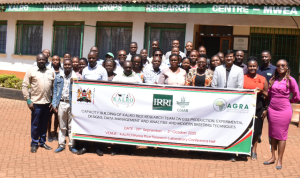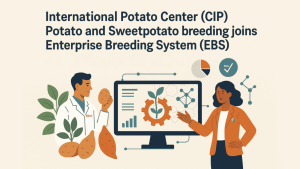The Enterprise Breeding System (EBS) just released its second quarter version for 2025.
Here are the highlights:
⚡Dynamic landing page of the Molecular Data Analysis tool, providing only the most relevant information based on a user’s input,
🔎QTL profiling workflow support to fast-track identification of desired alleles,
📈Store and analyze time-series data using integrated tools,
🔁Regenerate randomization to update parameter set details,
🌱Specify number of samples needed for selected plots for genotyping, and
📍Provide geospatial coordinates to accurately locate planting sites.
Read about the rest of the new features, improvements, and fixes here.


